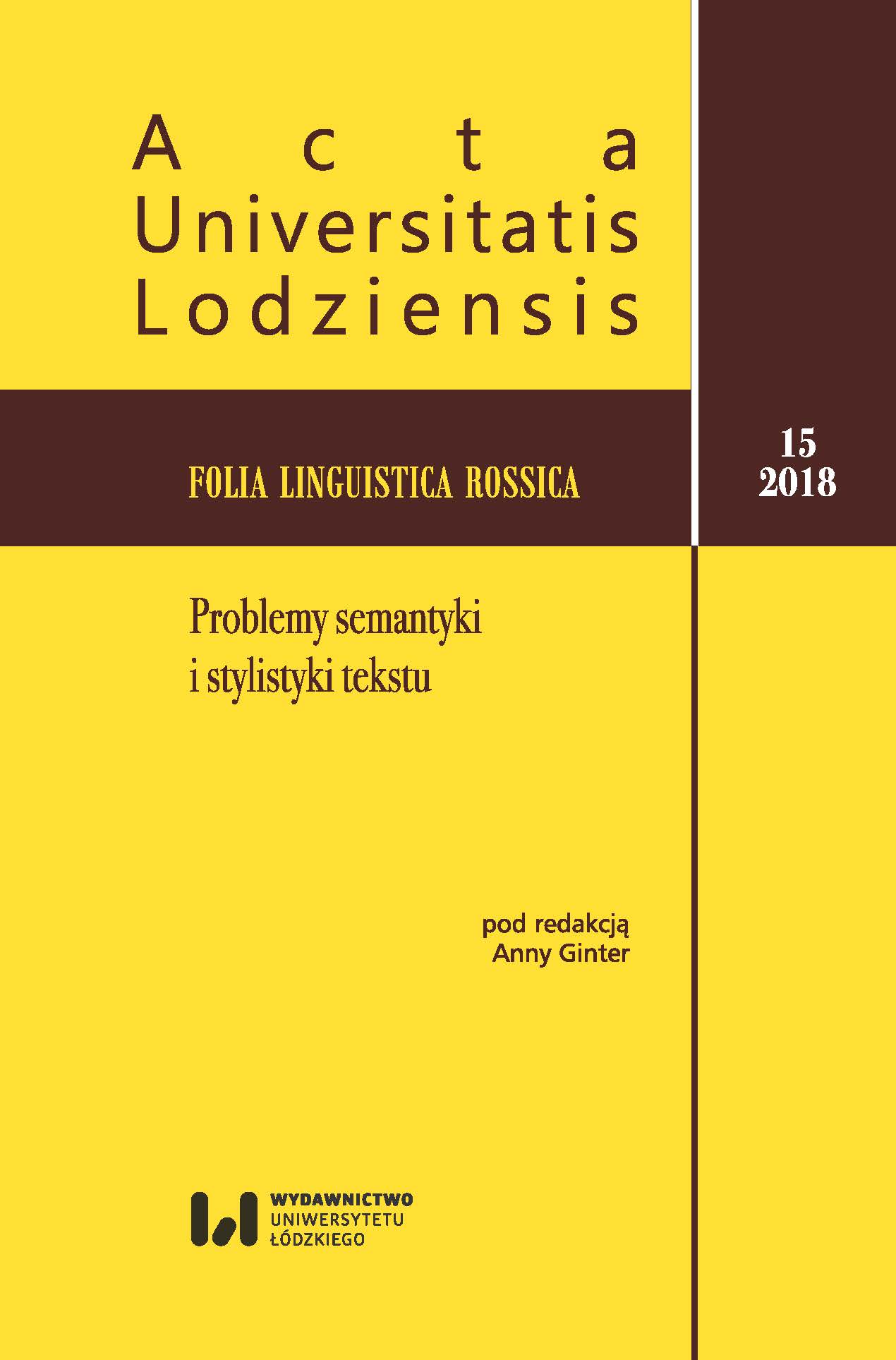Synaesthesia as a figurative language device on synaesthetic associations of Vladimir Nabokov
DOI:
https://doi.org/10.18778/1731-8025.15.18Keywords:
synaesthesia, figurative language, synaesthetic metaphor, metonymy, hypallage, Vladimir NabokovAbstract
The main goals of the article are to present the place of synaesthesia among the other devices of figurative language and to show diversity of synaesthetic associations in Vladimir Nabokov’s prose. As it has been proved, a key notion for understanding the mechanism and functioning of figures, such as synaesthesia, metaphor and metonymy, is that of conceptual conflict. The presence or absence of conceptual conflict underpins the distinction between living and conventional figures, as well as metonymy and hypallage.What is more, the distinction between metaphor and metonymy is based on the way they deal with conflict. In turn, interpretation of conceptual conflict may lead to understanding the mechanism of a synaesthetic association and the author’s strategy. The examples of Nabokov’s synaesthetic expressions show that metonymy and synaesthesia may be both present in a text and that they interact. However, it is worth underlying, that in literary texts synaesthesia may also coexist with hypallage and similes involving sensory lexemes, as it was observed on the examples of Nabokov’s prose.
References
Набоков В. В. (1990), Король, дама, валет, [w:] В. В. Ерофеев (red.), Владимир Набоков. Собрание сочинений в четырех томах, т. 1, Издательство «Правда», Москва, s. 113–280.
Google Scholar
Набоков В. В. (2000), Волшебник, Изд. Сипмозиум, http://royallib.com/book/DFimi_vladimir/ volshebnik.html (dostęp 10.03.2018), s. 20.
Google Scholar
Набоков В. В. (2013), Нежить, [w:] В. В. Набоков, Полное собрание рассказов, составление текста и примечания – А. Бабиков, Изд. «Азбука-Аттикус», Санкт-Петербург, s. 47–49.
Google Scholar
Nabokov V. (1995), Lolita, Penguin Books, London.
Google Scholar
Barcelona A. (2000), On the plausibility of claiming a metonymic motivation for conceptual metaphor, [w:] A. Barcelona (ed.), Metaphor and Metonymy at the Crossroads: A Cognitive Perspective, Mouton de Gruyter, Berlin & New York, s. 31–58.
Google Scholar
Day S.A. (2005), Some demographic and socio-cultural aspects of synesthesia, [w:] Robertson L., Sagiv N. (red.), Synesthesia: Perspectives from Cognitive Neuroscience, OUP, Oxford, http://www.daysyn.com/Day2005.pdf [dostęp: 14.03.2018].
Google Scholar
Dirven R. (1985), Metaphor as a basic means for extending lexicon, [w:] W. Paprotté, R. Dirven (red.), The Ubiquity of Metaphor: Metaphor in language and thought, John Benjamins, Amsterdam, s. 85–119.
Google Scholar
Engelking L. (2011), Chwyt metafizyczny. Vladimir Nabokov – estetyka z sankcją wyższej rzeczywistości, Wydawnictwo Uniwersytetu Łódzkiego, Łódź.
Google Scholar
Ginter A. (2015), Vladimir Nabokov i jego synestezyjny świat, Wydawnictwo Uniwersytetu Łódzkiego, Łódź.
Google Scholar
Kozłowska Z. (2016), Synestezyjna poezja Haliny Poświatowskiej, [w:] A. Rogowska, J. Kaleńska-Rodzaj (red.), Synestezja a sztuka, Wydawnictwo Aureus, Kraków, s. 109–128.
Google Scholar
Lakoff G., Johnson M. (2010), Metafory w naszym życiu, przeł. i wstępem opatrzył T. P. Krzeszowski, ALETHEIA, Warszawa.
Google Scholar
Martino G, Marks L. E. (2001), Synesthesia: Strong and Weak, „Current Directions in Psychological Science”, kwiecień 2001, vol. 10, nr 2, s. 61–65, https://www.researchgate.net/publication/247781245_Synesthesia_Strong_and_Weak [dostęp: 14.03.2018].
Google Scholar
Nabokov V. (1991), Tamte brzegi, przeł. E. Siemaszkiewicz, Czytelnik, Warszawa.
Google Scholar
Potok M. (2008), Hypallage jako problem poetyki przekładu na przykładzie romanc Federico Garcii Lorki, „Przekładaniec”, nr 17, s. 173–185.
Google Scholar
Prandi M. (2017), Conceptual Conflicts in Metaphor and Figurative Language, Routledge, New York and London.
Google Scholar
Simner J., Holenstein E. (2007), Ordinal Linguistic Personification as a Variant of Synesthesia, “Journal of Cognitive Neuroscience”, vol. 19 (4), s. 694–703, (wersja on-line: http://www.daysyn.com/SimnerandHolenstein2007.pdf [dostęp: 14.03.2018]).
Google Scholar
Strik Lievers F. (2017), Figures and the senses. Towards a definition of synaesthesia. Review of Cognitive Linguistics 15(1), s. 83–101; rękopis opublikowany na stronie: https://www.researchgate.net/publication/319166052_Figures_and_the_senses_Towards_a_definition_of_synaesthesia [dostęp: 14.03.2018].
Google Scholar
Taylor J.R.(2001), Kategoryzacja w języku. Prototypy w teorii językoznawczej, przeł. A. Skucińska, UNIVERSITAS, Kraków.
Google Scholar
Werning M., Fleischhauer J., Beseoglu H., (2006), The Cognitive Accessibility of Synaesthetic Metaphors, [w:] red. R. Sun, N. Miyake, Proceedings of the Twenty Eighth Annual Conference of the Cognitive Science Society, London, s. 2365–2370.
Google Scholar
Downloads
Published
How to Cite
Issue
Section
License

This work is licensed under a Creative Commons Attribution-NonCommercial-NoDerivatives 4.0 International License.









